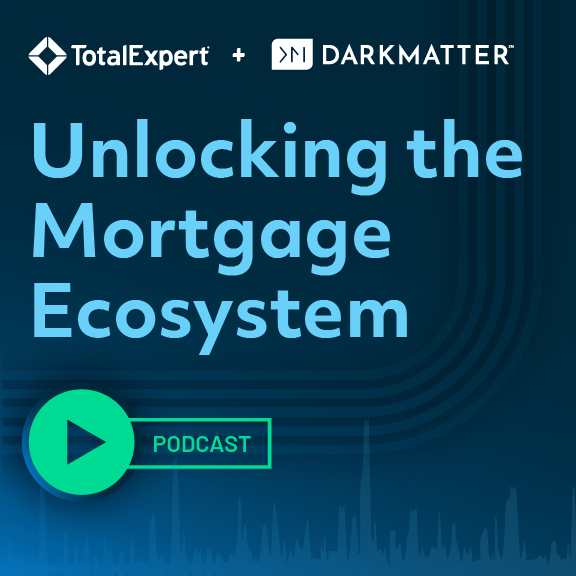The Fed rate cuts that hopeful homebuyers were waiting for are finally starting to materialize. Yet, mortgage rates haven’t immediately fallen. In fact, mortgage rates ticked up a bit in October after the first rate cut in September.
Homebuyers are anxiously wondering what’s going on—and what’s coming next. This presents a huge opportunity to earn their trust by providing education, guidance, and insights into what they can expect from the housing market in the coming months.
Mortgage lenders and loan officers (LOs) need to engage potential homebuyers to help them understand the complex dynamics and nuances of our industry. They need to help them feel (at least a little) more comfortable with what to expect. Earning their trust today will help lock in their business when they do make a mortgage-related decision—whether it’s their first home purchase, an upsize or downsize, or a long-awaited refinance.
Borrowers and homeowners want an expert they can rely on to answer their questions and offer guidance on the complicated mortgage market. Loan officers need to be able to speak as this kind of expert authority on factors influencing mortgage rates, as well as the broader housing market.
This blog will cover:
- Explaining the “Fed rate”?
- Why Fed rates don’t directly drive mortgage rates
- What to watch: 10-year Treasury yields signal mortgage rates
- How education now can build loyalty for later
- How Will the Federal Reserve’s Interest Rate Cuts Impact Lenders?
Explaining the “Fed rate”?
While this might be “Mortgage 101” to you, most people only have a general understanding that the “Fed rate” is important in shaping the interest rates that consumers see on mortgages and other loans. So, it can be helpful to provide your customers with a broader definition and discussion of what the “Fed rate” is, and how the Federal Reserve thinks about its decisions to raise or lower that rate.
The “Fed rate” is the federal funds rate—the interest rate at which banks lend money to each other overnight to meet reserve requirements set by the Federal Reserve (the U.S. central bank). The Fed rate is one of the Federal Reserve’s only tools for fulfilling its “dual mandate” of maintaining stable inflation and maximizing employment.
By lowering the rate, the Fed can stimulate borrowing, spending, and hiring during economic slowdowns, boosting employment. Conversely, by raising the rate, the Fed can cool down excessive borrowing and spending, helping to control inflation when the economy is overheated.
But this is a delicate and extraordinarily difficult balance to achieve. The Fed rate is an admittedly “blunt” tool for influencing economic stability. And Fed rate changes have an infamous “long and variable lag,” meaning the impacts take months to play out.
Why Fed rates don’t directly drive mortgage rates
The Fed’s decision to cut rates in September and November 2024 undoubtedly included hopes of easing the unprecedented tension in the housing market. But there are several reasons why mortgage rates aren’t following Fed rates on a linear basis:
The mortgage market already priced in initial Fed rate cuts
The Fed began signaling its intention to cut rates way back in December 2023. Experts debated the timing and size of those cuts through most of 2024, but the sense of inevitability only grew stronger—peaking in August as evidenced by some anticipating emergency rate cuts and others predicting a massive .75% cut.
Many mortgage lenders took calculated risks by lowering their rates in advance of a likely Fed rate cut. The goal was to capture constrained homebuying demand by being among the first to lower their rates. By the time the Fed rate cuts were announced on September 18, most lenders had already priced in that initial .5% drop.
In other words, the mortgage market does not always respond to the federal funds, but rather anticipates where that rate is headed in the near future. This naturally leads to the other two macroeconomic factors that have actually pushed mortgage rates higher since the Fed’s September rate cut.
Employment data indicates a strong economy
Jobs reports in the U.S. continue to exceed expectations, signaling broader economic strength. This strong job market persists in spite of geopolitical and macroeconomic headwinds and in defiance of both historic norms and expert-predicted slowing.
Mortgage lenders look at employment data as a sign of where demand will be in the coming months. A strong economy puts no pressure on lenders to lower mortgage rates. Moreover, employment data is also a reliable indicator of what the Fed will do with its rates in the coming months. If the job market remains hot, the Fed may hold off on additional rate cuts (and rate hikes may even re-enter the conversation).
Inflation has stagnated
We’ve come a long way from the surging inflation we saw 18 months ago. Inflation now sits relatively close to the Fed’s 2% target. But experts always warned the “final mile” would be the most challenging.
The mortgage market looks at inflation as a signal of what the Fed will do next. Fed officials made it clear throughout 2024 that they’re anxious about easing up too early—and they’re firm on their 2% target. So, stubborn inflation may contribute to a decision to hold off on further rate cuts in the near future.
Demand remains low in the mortgage-backed securities market
Mortgage lenders view mortgages as financial products and one of the main ways they realize value on these products is through the sale of mortgage-backed securities (MBS).
As a result, mortgage rates can be heavily influenced by investor demand for MBS: When MBS are in high demand, lenders can realize higher yields. So, they’re incentivized to lower mortgage rates to drive mortgage volume and capture those higher yields.
Right now, inflation and other factors (even lingering effects from the 2008 housing crisis) are keeping demand for MBS relatively low. So, the MBS is not putting any downward pressure on mortgage rates.
What to watch: 10-year Treasury yields signal mortgage rates
Admittedly, the four factors above are just part of what’s influencing mortgage rates. The complex interplay of various factors is hard for even experts to untangle and reliably predict.
The best advice you can give homebuyers wondering where mortgage rates are headed: Watch the Fed’s 10-year Treasury yields. This figure provides a reliable shortcut to anticipating mortgage rates, rather than trying to calculate the relative influence of various macroeconomic factors on their own.
That’s because mortgages are long-term investments. So, the mortgage market values long-term indicators over short-term signals. The federal funds rate is considered a short-term rate (for the aforementioned overnight borrowing between banks). But the 10-year Treasury yield is one of the most reliable long-term indicators. It incorporates investor sentiment about future economic strength, global economic trends, and inflation expectations.
Right now, 10-year Treasury yields remain high by historic standards. After peaking in late 2023, they hit a recent low in mid-2024 and climbed back up in recent weeks. We’ve seen mortgage rates take a very similar path over the last year.
How education now can build loyalty for later
Loan officers are likely frustrated that long-awaited rate cuts haven’t resulted in a massive surge in homebuying. And they’re certainly not excited to see mortgage rates ticking up recently. But these pains his potential homebuyers even harder.
The best strategy at the moment is to lean into an empathetic approach: Recognize that homebuyers are feeling even more frustrated and confused by the mortgage market. This presents a tremendous opportunity to meet homebuyers where they’re at—engaging them with helpful education on what’s happening in the mortgage market right now.
Providing this much-needed support and guidance around how and when the Fed rate will impact mortgage interest rates can build invaluable trust and sow the seeds for long-term loyalty. So, when the time is right, you’ll be their first call.
How Will the Federal Reserve’s Interest Rate Cuts Impact Lenders?
Hear what Total Expert Founder & CEO Joe Welu and Chief Lending Officer Dan Catinella think lenders and loan officers can expect if rates continue to drop on the Expert Insights Podcast >


